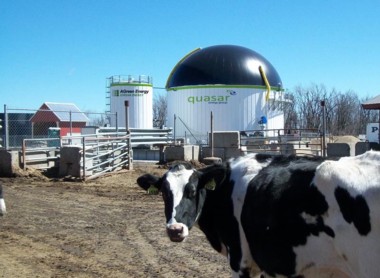The folks who deal with waste and recycling for the Massachusetts Department of Environmental Protection work quietly, but their mill grinds on, cranking out plans to reduce Massachusetts’ mountains of garbage.
The state’s landfill space has shrunk to nearly nothing—the Northampton landfill, for example, which at one time took waste from many towns in the Valley, is due to be closed by May—and proposals for incinerators always meet opposition from environmentalists and prospective host communities.
So the DEP carries on with the thankless but increasingly pressing business of chipping away at the rubbish, trying to divert portions of it through recycling, packaging reduction and manufacturer takebacks. The agency thinks big: its goal for 2050 is an 80 percent reduction in waste volume from 1990 levels.
To that end, the state plans to take a step next year that’s revolutionary in its way, though many won’t be aware of the change it will bring about when it goes into effect. If the DEP has its way, beginning in 2014, Massachusetts will be the first state in the country to require all kinds of establishments that generate a ton or more of food waste per week—restaurants, hospitals, hotels, universities, grocery stores and food producing plants—to compost their food waste instead of just tossing it.
So where will the leavings end up? Meet the anaerobic digester. It will soon be eating the food they throw out the back door at your favorite eatery.
Currently, the model working digester in Massachusetts is the silo-shaped processor at Jordan Dairy Farms in Rutland. But others are in the works. In the Valley, two will be running by the end of this year, one at Barway Farm in Deerfield and one at Long View farm in Hadley.
A note on anaerobic digesters: there are some 2,000 working anaerobic digesters in the U.S.—about 200 on farms, the rest scarfing up sludge at wastewater treatment plants. The DEP envisions more food waste digesters in Massachusetts. In Europe, there are some 10,000 anaerobic digesters, 6,800 of which are in Germany; the European Union has encouraged subsidies for them because they are renewable energy producers.
At Jordan Dairy Farms, food waste is brought in in a specially designed tank truck and converted to methane that, in turn, generates electricity. The farm presently takes in waste from a small number of food companies, and the methane the digester produces generates enough electricity each day to power a typical house for 134 days, the operators say. Fertilizer is a byproduct of the digester’s process.
In Massachusetts, food waste makes up roughly 15 percent of the waste stream by volume and even more by weight, because much of it is wet. Add in yard waste and total organic waste adds up to 25 percent of the stream.
Massachusetts generates 1.4 million tons of organic waste per year; the state hopes to get a third of it into digesters. Among the benefits are savings on disposal space and reduction in greenhouse gas emissions, since less food will be rotting in landfills.•



